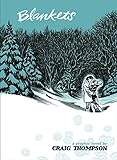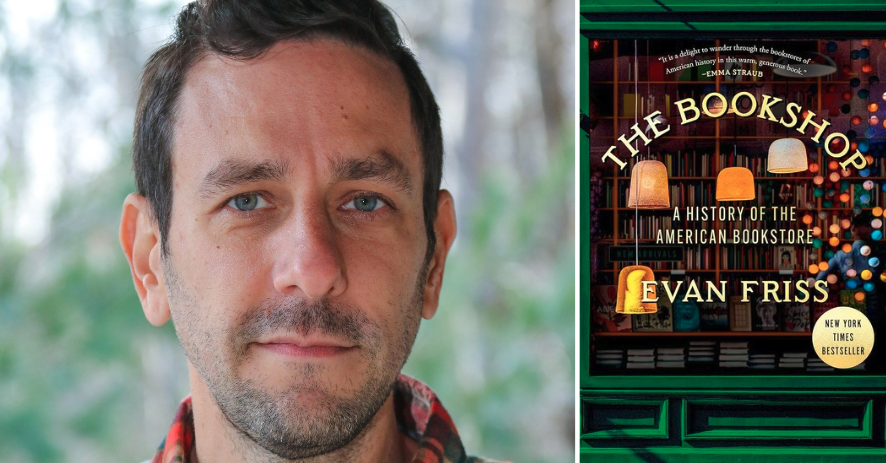 I wasn’t predisposed to like Habibi, Craig Thompson’s Michener-thick new graphic novel. Though I’d loved his debut Good-bye, Chunky Rice — a slender ballad of a book about lost friendship — I found Blankets, his widely hailed follow-up, to be maddeningly precious. In using 600 swooning pages to tell an autobiographical tale of teenage identity, Thompson elevated his subject to a wildly exalted level. “I heard Raina’s breathing,” read one typical passage, as his protagonists lay in bed. “And beneath that, her heart beating — and beyond that, the gentle murmur of spirits in the room…And the sounds wove into a rhythm of hushed orchestration — spiraling me into slumber.” Characters couldn’t just fall asleep; first came Marillion lyrics. Blankets, and Thompson, were praised for the same things that would later fuel ridicule of Stephenie Meyer’s writing: an overwrought breathlessness in communicating the banal.
I wasn’t predisposed to like Habibi, Craig Thompson’s Michener-thick new graphic novel. Though I’d loved his debut Good-bye, Chunky Rice — a slender ballad of a book about lost friendship — I found Blankets, his widely hailed follow-up, to be maddeningly precious. In using 600 swooning pages to tell an autobiographical tale of teenage identity, Thompson elevated his subject to a wildly exalted level. “I heard Raina’s breathing,” read one typical passage, as his protagonists lay in bed. “And beneath that, her heart beating — and beyond that, the gentle murmur of spirits in the room…And the sounds wove into a rhythm of hushed orchestration — spiraling me into slumber.” Characters couldn’t just fall asleep; first came Marillion lyrics. Blankets, and Thompson, were praised for the same things that would later fuel ridicule of Stephenie Meyer’s writing: an overwrought breathlessness in communicating the banal.

 Unlike Meyer, though, the problem wasn’t a lack of talent. Rather, it seemed Thompson had too much talent for the story, like Peter Jackson directing an Edward Burns script. Though it grappled with religion, Blankets was at heart a tale of that dreaded thing, adolescent love — and as such, was a poor match for its visual flights and experimental layouts. Thompson’s abilities needed a wider narrative, a larger canvas to fill.
Unlike Meyer, though, the problem wasn’t a lack of talent. Rather, it seemed Thompson had too much talent for the story, like Peter Jackson directing an Edward Burns script. Though it grappled with religion, Blankets was at heart a tale of that dreaded thing, adolescent love — and as such, was a poor match for its visual flights and experimental layouts. Thompson’s abilities needed a wider narrative, a larger canvas to fill.
Eight years after Blankets, then, he brings us Habibi. And though at a glance, it might seem similar to its predecessor — a boy and a girl against a hostile world, Islam standing in for Blankets’ Christianity — Habibi is indeed the canvas Thompson needed. It’s layered, daring, and brilliantly told — an intricate story of love, religion, desire, survival, poverty, hope. It’s drenched in metaphor and rich with double meanings. Yet for all it takes on, Habibi feels light on its feet; throughout, we feel Thompson reveling in his skills as a writer and artist. Its exuberance, even in its darkest moments, feels somehow celebratory. Despite my initial skepticism, I’m not sure that I’ve read a better graphic novel.
The book centers on Dodola and Zam, escaped slaves who live on a boat marooned in a fictional Arabian desert. Dodola — a beautiful, determined girl who at twelve fled servitude with an infant Zam — passes the years by teaching the boy about Islam, sharing its many stories. In Thompson’s telling, faith is a captivating, guiding force, something to learn from and revel in. Throughout, he runs tales from the Qur’an parallel with his present-day story, lending a latticework of gravity to his characters’ actions. Dodola and Zam aren’t simply casting blindly about; they’re retracing the steps of their forerunners. “I found lots and lots of water,” Zam tells Dodola after a gleeful excursion. “Just like baby Ishmael.” Thanks to Dodola’s storytelling, the context is his, and ours.
As with Chunky-Rice, Habibi is propelled by separation. Just as we gain our footing, Dodola is kidnapped and made a courtesan for the sultan of Wanatolia, a decadent megatropolis. Zam, bereft and unable to survive, descends into a slum where he undergoes his own tragic transformation. Each fears the other dead, and it seems that their stories will split. But when, by chance, they find each other — Zam now grown, Dodola dulled by sex and fear — Habibi manages to grow in emotional strength. The story of their second life together, as Dodola tries to understand a Zam quite different from the boy she’d known, is wrenching and profound. It is a love story unlike any in memory, because it is as ambitious and complex as the book itself. “She is my sister, my mother, my teacher,” Zam says in a self-loathing monologue. “Then I turned her into an object of lust… What choice do we have but to construct an ideal, an idol, to impose on the beloved?” This is a big question, but the author proves himself well up to the task of discovering an answer.
Thompson sees Habibi as an antidote to the post-9/11 vilification of Islam, recently telling an interviewer, “I wanted to humanize [Islam] and focus on the beauty, because it is so full of beauty.” He has achieved that goal, and anyone doubting his commitment or motive — he is, after all, a white man from Portland, raised fundamentalist Christian — need only read the book. He has given himself to it completely; one sees a bit of him in young Dodola’s husband, a scribe who “threw himself into his work — often laboring through the night.” Thompson’s own work is manically elaborate and ingeniously laid out; he’s become expert at moving the eye through exploding, dexterous panels. Working in “alternative comics,” a genre often mocked for its coffee-sipping ennui, Thompson has created a massive, lasting epic in Habibi. And if we must wait eight years for his next? I suppose we’ll have to wait.








